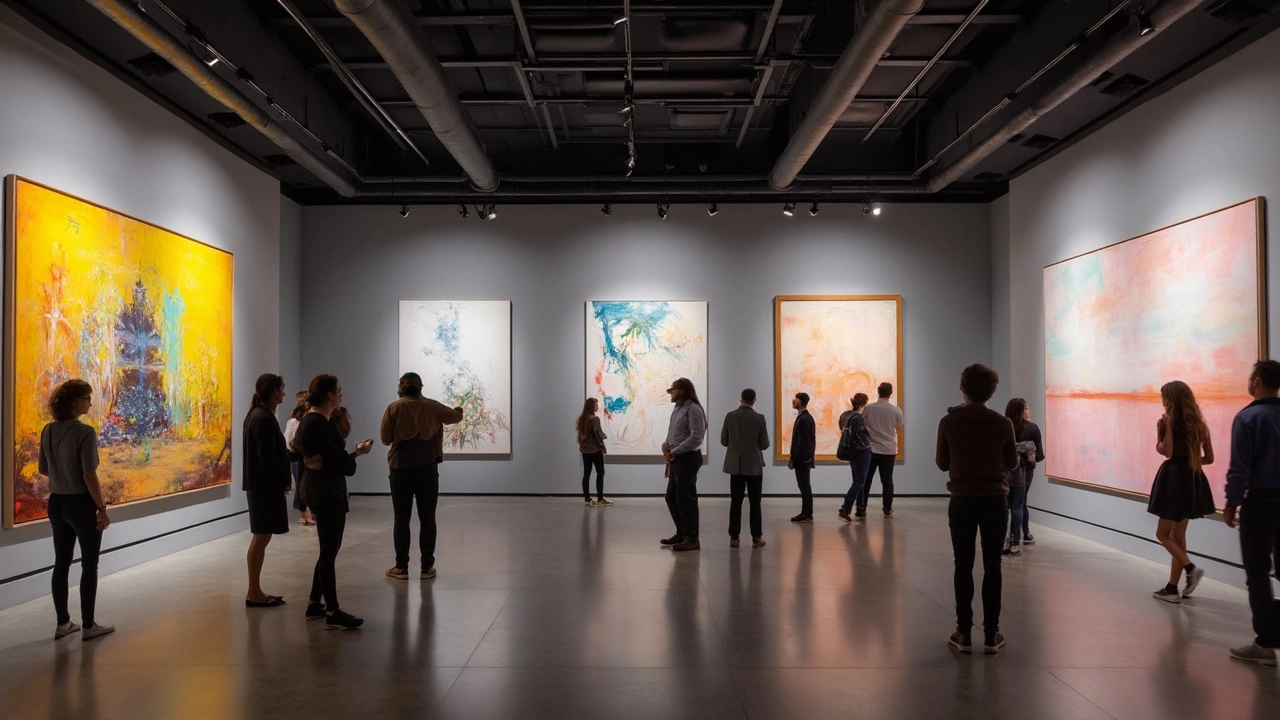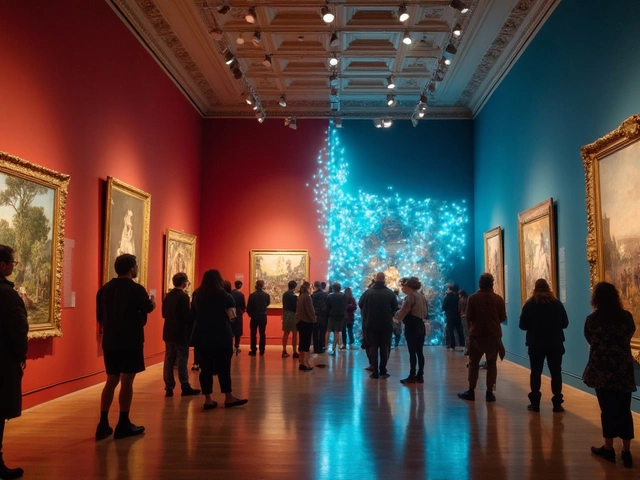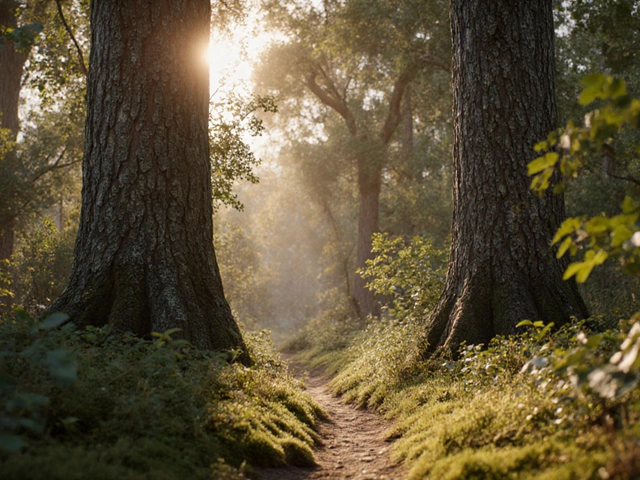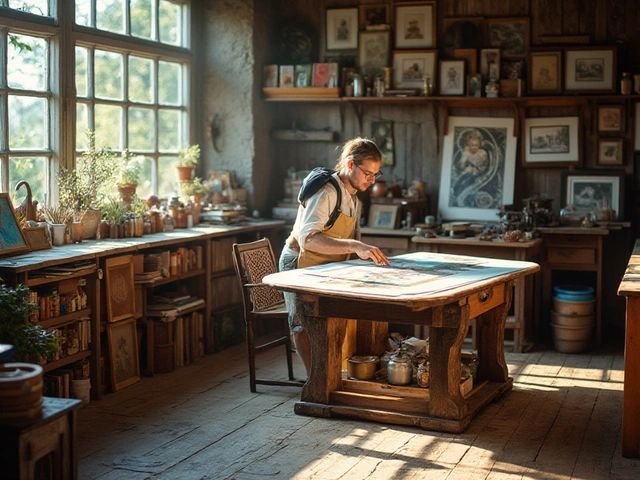You ever walk into an art gallery and it feels like you've stumbled into an epic duet? That's what it's like at a dual exhibition, where two artists team up to create something bigger than their solo efforts. But what exactly do we call this type of exhibition? The answer is simple—a two-artist show, or more fancily, a dual exhibition. These setups aren’t just about sharing space; they’re about merging visions, sparking dialogues, and engaging viewers in a whole new experience.
There's something inherently fascinating about seeing how two artists—sometimes with wildly different styles—can share a canvas, so to speak. You get these incredible contrasts or surprising harmonies, and it makes you see the work in a fresh light. It's like when you mix sweet and salty snacks—unexpectedly delightful. And for the artists, it's a chance to step out of their comfort zone and inspire each other, which might be the secret sauce behind the magic of these collaborations.
- What's in a Name?
- Why Two Artists?
- Choosing the Right Venue
- Creating Harmony and Contrast
- Tips for Attending a Dual Exhibition
- Organizing Your Own: Steps to Success
What's in a Name?
When we talk about a two-artist exhibition, we're talking about something with a few different names. Whether you call it a dual exhibition, a duo show, or sometimes even a pair show, the idea is all about collaboration. These terms might sound interchangeable, but each carries a slightly different vibe. While 'dual' sounds a bit formal, 'duo show' feels more like a friendly meeting between buddies.
The choice of name can reflect the relationship between participating artists or even set the tone for the exhibit itself. For instance, when two emerging artists collaborate, they might go for a more casual term like 'duo show.' However, if established artists are showcasing their collaborative showcase, the term 'dual exhibition' might be used. The name can be crucial in grabbing attention and setting expectations for viewers as they walk through those gallery doors.
Interestingly, naming conventions can also hint at the exhibit's underlying theme. Maybe one artist works in vibrant colors while the other sticks to monochromes. Naming the show 'Contrast in Unity' immediately suggests how these differences become a central talking point. Titles like 'Parallel Visions' or 'Twofold Story' work magic in capturing the essence of collaboration and give a peek into the dialogues that unfold.
In the grand scheme, the name does more than label; it calls out to the audience and invites them into a world where two artistic minds collide. This naming process, often overlooked, is actually a strategic move in marketing the art exhibition and ensuring it resonates with both artists' fans and new viewers alike.
Why Two Artists?
Alright, you might be thinking—why just two? Why not a crowd? There’s a unique magic in pairing two artists for an exhibition. For starters, it's manageable. With two, each artist gets enough space and attention, avoiding the chaos of too many styles competing for your eyeballs.
Dual exhibitions often create an intimate dialogue between the works. This isn’t just a gallery full of random pieces; it’s like having an intriguing conversation between the two artists. One artist's abstract landscapes might play off the other's portrait series, adding layers of meaning to each piece that wouldn’t exist alone.
Collaborative exhibits also offer a fresh narrative. The interplay of contrasts—think modern versus traditional, or vibrant versus muted color palettes—can highlight qualities in the artworks you might otherwise miss. And let's not forget the artists themselves. Collaborating in a two-artist show pushes them creatively, making them rethink their work through someone else's lens.
From a planning perspective, these exhibitions are a bit simpler to organize compared to solos or larger group shows. Logistically, it involves just two schedules to coordinate, and fewer artworks to manage. But it delivers all the impact, sometimes even more. It’s like having a dynamic duo in a concert—there’s a certain energy and focus that’s hard to beat.
Choosing the Right Venue
Picking the perfect venue for a two-artist exhibition is like finding the right frame for a masterpiece—it can enhance or diminish the whole experience. The venue sets the stage, literally, for how each piece will interact with its surroundings and the audience.
First, consider the size of the venue. You want a space that feels neither too cramped nor too empty. Get a venue that can accommodate the number of artworks while allowing for plenty of room to move without the feeling of being overwhelmed. Something like the Wellington City Gallery, with its flexible floor plans, can be ideal for showcasing distinct but complementary art styles.
Ambiance matters too. You wouldn't want vibrant, contemporary works in a dim and dusty old building, right? Think about the lighting and how it affects the colors and textures of the artworks. Good natural light or adjustable gallery lighting can make a world of difference in how art is perceived.
Location is another biggie. Urban areas with lots of foot traffic like Wellington Central or trendy places close to art-loving communities are goldmines for attracting visitors. The venue should also be easily accessible by public transport or have parking options available.
Working on a budget? Many independent art spaces offer more affordable rates and a more personalized approach. Or consider partnering with community centers or universities that might be willing to host for free or at a reduced rate in exchange for the exposure and cultural experience.
And let's not forget the technical aspects. Ensure the venue has good temperature controls to preserve the artworks and proper security measures to protect them. Also, think about amenities like restrooms and seating areas—these are often overlooked but critical for keeping guests comfortable during their visit.
Overall, a dual exhibition finds its soul in a venue that complements and elevates the art itself. The right setting helps create a memorable experience that engages and captivates the audience, making it well worth the time and effort.
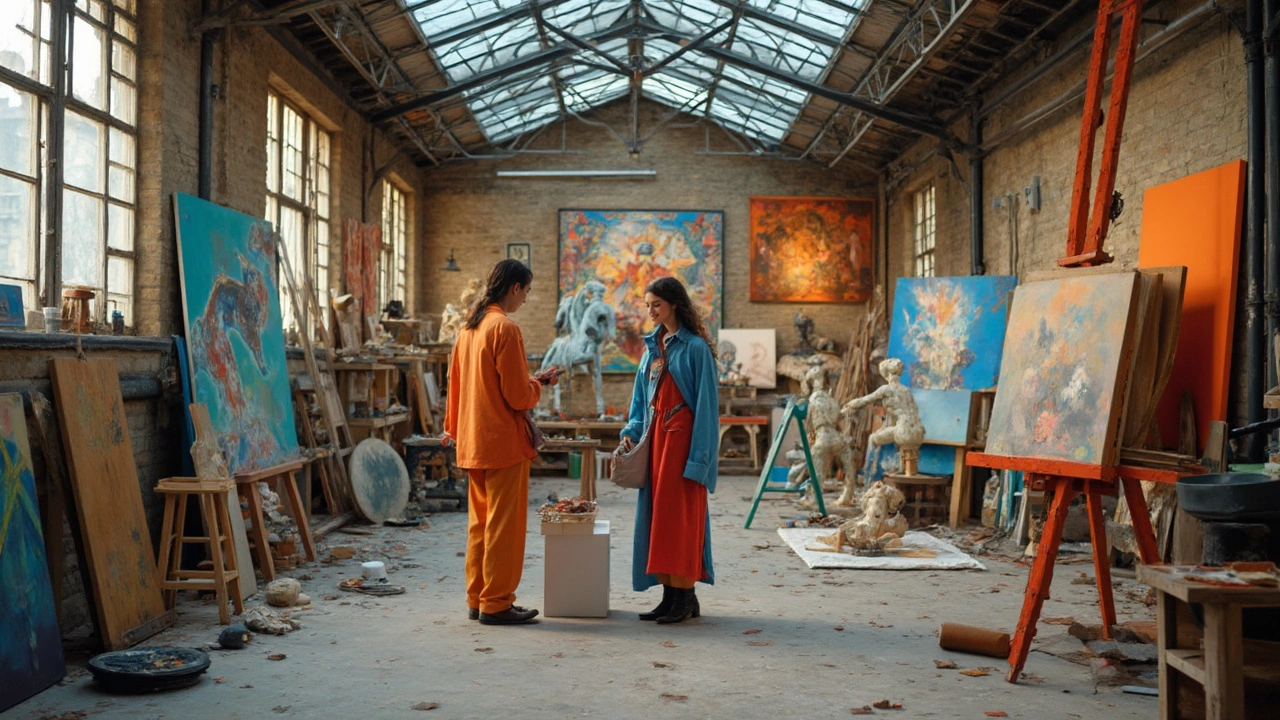
Creating Harmony and Contrast
So, you’re looking at a dual exhibition and wondering how two artists can make it work without their pieces clashing. Well, think of it like a good marriage—the differences can actually make things more interesting! Successfully blending art styles is a balancing act, creating harmony without losing the unique voices of each artist. They might draw connections in theme, color palette, or even the way they express emotions on canvas.
Contrasts can be just as powerful as harmony. When two artists with different styles display their work side by side, it can create a dynamic conversation between the pieces. It’s like watching a debate unfold right in front of you. This can lead viewers to make new discoveries, noticing elements in each work that might otherwise be missed in a solo exhibition. Sometimes, contrasting styles highlight the strengths of each piece, making the overall experience richer and more engaging.
When putting together such an exhibition, curators often look for common threads. It could be a shared motif, like urban landscapes or human experiences. Or maybe it's about color—imagine one artist focuses on bold, vibrant hues, while the other uses a more subdued palette. This type of collaborative showcase encourages viewers to see connections while appreciating contrasting elements.
Here's a quick idea of how this plays out in real settings:
- Theme Link: Two artists might explore the concept of time. One uses digital art to depict rapid technological advances, the other uses oil paintings to capture the slow decay of abandoned buildings. Both tell a story about time but through their distinct lenses.
- Color Contrasts: Artist A fills their work with black and white imagery, while Artist B bursts out with neon colors. Placing these together can be visually jolting yet compelling.
- Emotional Tone: One artist's work might have a somber, meditative air, while the other's feels light and whimsical. This juxtaposition can enhance the emotional impact of both.
The key is not to force similarities, but to appreciate and respect the individual characteristics each artist brings. Art enthusiasts can look for these juxtapositions to dive deeper into the narratives and appreciate the subtle, often unexpected, connections between the works on display.
Tips for Attending a Dual Exhibition
Stepping into a dual exhibition is like being invited to a creative conversation between two artists. But before you head out, there are a few things you might want to keep in mind to get the most out of the experience.
First up, do a bit of homework. Knowing a little about the artists beforehand can give you a deeper appreciation of their work. Check out their past projects, styles, and what kind of themes they usually explore. This background info adds layers to what you're seeing and might surprise you with connections you hadn’t noticed before.
While you're there, keep an open mind. Art exhibitions like these are designed to challenge the norm and mix things up. Expect unexpected pairings of styles or mediums. This isn't your regular gallery tour—embrace the surprises!
- Engage with the art: Take your time to soak in each piece. Ask yourself what story the artwork tells and how it complements or contrasts with the other artist's work.
- Talk to other attendees: Galleries are social spaces, and discussing with others can spark new insights. What did they notice that you didn't? Sharing ideas makes the experience richer.
- Attend any available talks or tours: These often give insider views and background stories that deepen your understanding. Artists sometimes attend these events, sharing firsthand insights into their creative process.
If possible, visit the exhibition more than once. The first time you might just skim the surface, but upon returning, you’ll notice details and nuances you missed before.
Lastly, don't shy away from asking questions. If there’s something you don’t get, chat with the gallery staff. They're usually super knowledgeable and can offer perspectives you hadn't considered.
With these tips, attending a dual exhibition can be an enlightening adventure—not just a look at some art on a wall.
Organizing Your Own: Steps to Success
Ready to turn your artistic collaboration into a real-life exhibit? It's an exciting venture but requires some savvy planning. Here's how to pull off a fantastic art exhibition featuring two artists.
- Selecting Artists: Pick artists who either contrast sharply or complement each other. They must have a vision that clicks together to make the exhibition cohesive. Often, this involves lots of discussion and brainstorming.
- Finding the Right Venue: Scope out galleries or spaces that align with the exhibit's theme. Consider the size and location to ensure it's accessible for your audience. Talk to other artists or gallery owners; they might suggest hidden gems around your city.
- Curate Thoughtfully: Decide how the artworks will be displayed. Will you intermix the artists' works or dedicate specific spaces for each? This will impact how viewers experience the collaborative showcase.
- Marketing the Event: Use social media, email lists, and even a touch of old-school flyers. Create a buzz by sharing sneak peeks and behind-the-scenes footage. Craft a catchy narrative around your exhibit to draw in audiences.
- Coordinate Logistics: An exhibition isn't all glitz; it's about getting stuff done too. Ensure artworks are safely transported and displayed. Check lighting, signages, and amenities. Preparing a checklist can save you plenty of headaches.
- Engage the Audience: Host an opening event where both artists speak about their work and invite questions. Maybe even arrange some live art or interactive segments to keep things lively.
Attention to detail is crucial. You want everything from the exhibited artworks to the visitor experience to hit the right note. By carefully planning and executing each step, you and your artist partner can create a dual exhibition that is both memorable and impactful, capturing the essence of a stellar art collaboration.
